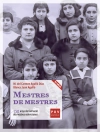This course is designed to present and develop jazz arranging and compositional principles. In preparation for successful improvisation, composing and transcription, a wide range of theoretical topics are presented.
The stylistic considerations of jazz improvisation and composition require an extensive and working knowledge of jazz theory, and mastery of diatonic, bitonal, poly-tonal and atonal theoretical maximums and processes – including the refining of the [imitation] transcription process towards theoretical justification and conventional usage.
สารบัญ
Preface; Acknowledgments; Introduction; Music Is Math: An Effective Approach to Teaching Jazz Improvisation; 1 Advanced Scale Study, Section 1) Forms of Dominant Scale; Section 2) Augmented Scale/Melodic Minor Equivalent; Section 3a) Diminished and Inverted Diminished Scales; Section 3b) Two-In-One; 2 Chord Scale Solutions; 3 Alternate Solutions in Dominant; 4 The ii-V Progression and Tritone Substitution; 5 Transcriptions (Chronological); 6 Alternative Systems; 7 Polymorphic Root System; 8 Composition and Arranging; Afterword
เกี่ยวกับผู้แต่ง
Widely regarded as one of the most important jazz theorists of our time, Ron Westray continues to expand upon the legacy set before him.












